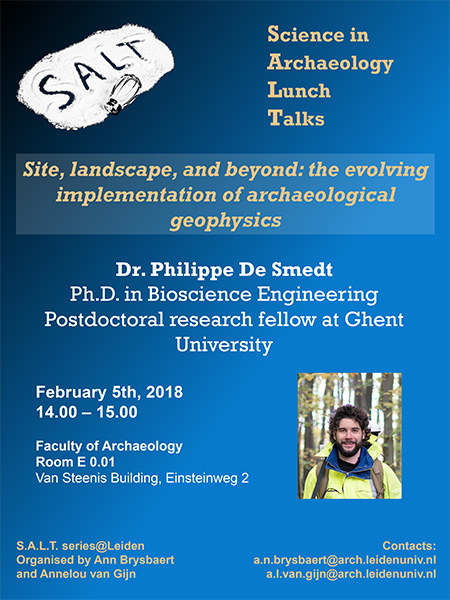The evolving implementation of archaeological geophysics

Science in Archaeology Lunch Talks (SALT)
5 February 2018
Speaker: Dr. Philippe De Smedt, post-doctoral research fellow at Ghent University (Belgium)
Abstract: Geophysical prospection methods have been implemented in archaeological research for over 50 years. Technological advances, mainly in magnetic survey approaches, have caused the archaeological application of these techniques to surge. More recent advancements, including the use of geophysical equipment in mobile configurations, now allow investigating entire archaeological landscapes efficiently, while diversifying the array of instruments helps addressing different soil properties simultaneously. This evolution taps into the potential of a more nuanced investigation of the subsurface: evaluating not only if and where archaeological features are present, but equally allowing to examine their morphology, level of preservation and palaeoenvironmental setting.
In this lecture, main focus will be on how the combined mapping of magnetic and electrical properties can contribute to constructing a robust basis for archaeological research at a landscape scale. Through discussing the large scale application of electromagnetic survey methods within the prehistoric landscapes of Stonehenge and Avebury (UK) the potential and pitfalls of geophysical surveys will be addressed, alongside their potential to serve broader archaeological research frameworks.
About the speaker: Philippe De Smedt is a post-doctoral research fellow at Ghent University (Belgium). As an archaeologist with a Ph.D. in Bioscience Engineering, he conducts interdisciplinary research on the implementation of geophysics and soil magnetism to address archaeological research questions. His current archaeological research focusses on the landscape archaeology of the Stonehenge-Avebury site complex, alongside the implementation of geophysical methods in preventive archaeology.